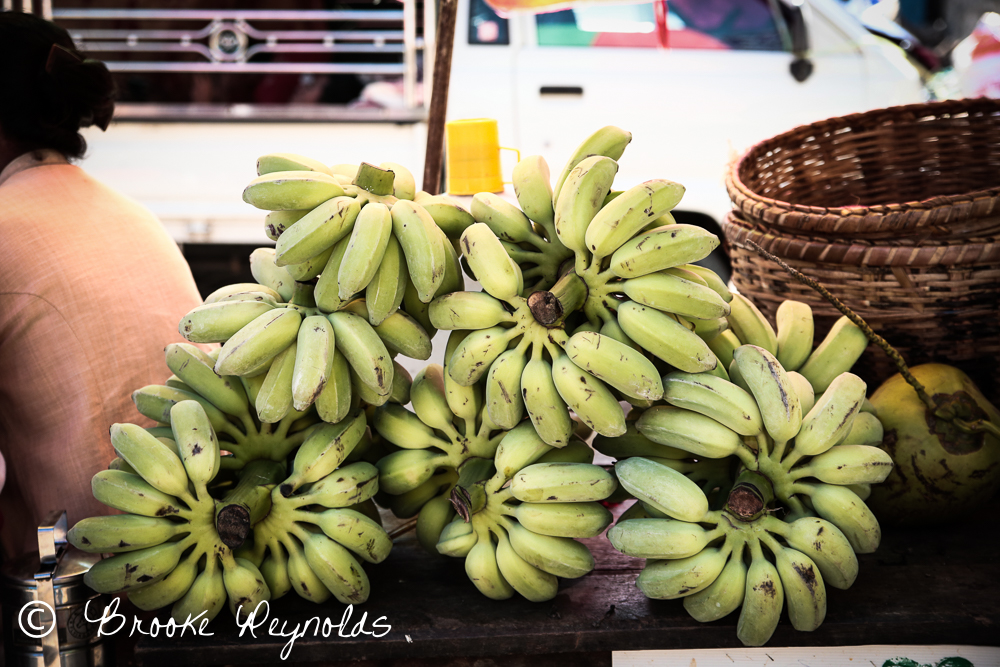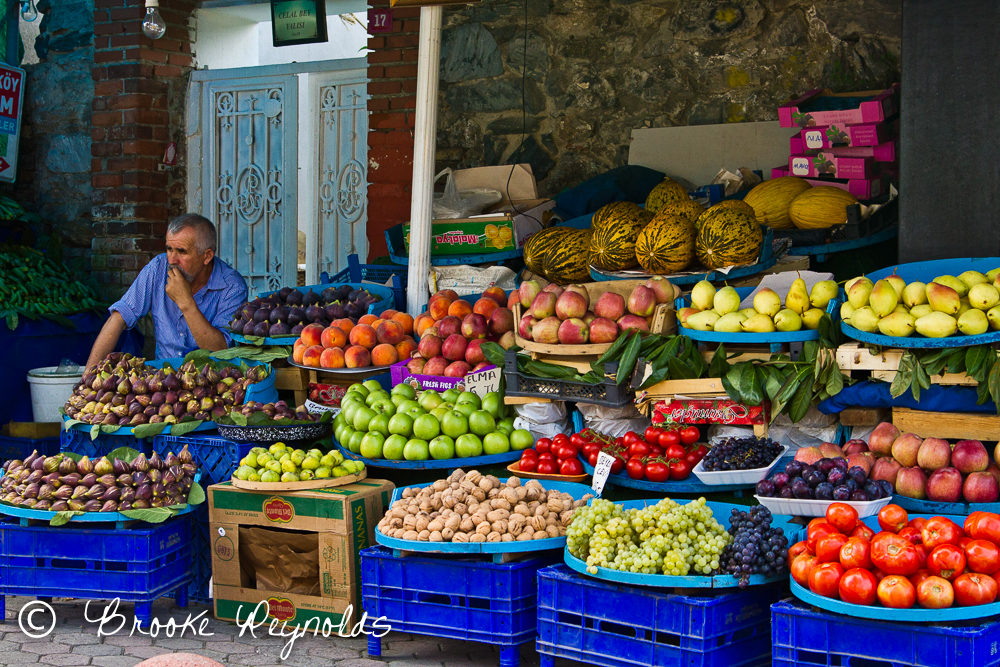How to Travel As A Vegan
Image above from VeganStreet.com :)
I get this question a lot… how on Earth do you stay vegan when you travel so much? Well, sometimes it’s pretty easy (and exciting to try new things!), other times, it takes some effort. Planning ahead really helps. Here’s a few things I recommend.
1) Bring your own snacks.
We almost always bring plant-based bars with us in case of emergency. We make our own vegan krispie bars or banana oat bars. Or buy some! Some of our favorites are Raw Revolution, Larabars, and Kit’s Organic*.
Also, packets of oatmeal are great. As are packets of instant rice and beans. Tasty Bites has a lot of vegan options and can be heated by sticking them in a coffee pot of hot boiling water if your hotel room doesn’t have a microwave. Also, McDougall’s cups are great for traveling. Fruit is awesome for bringing on the plane, but if you’re going abroad to another country, you are most likely going to have to throw away any fruit (unless its dried fruit) before going through security in the other country. Trail mix, chips, chopped veggies and dips, nut butters, crackers, cans of chickpeas to add to meals, PB&J’s and protein shake packets to mix with water are other good vegan travel food ideas.
For beverage, I always bring a stainless steel water bottle in a carry strap with me. I refill it at the airport drinking fountains (after security or you’ll just have to dump it out!) so I don’t have to buy so many plastic water bottles and avoid using the plastic cups on the plane- I just have them refill my water bottle.
2) Scope out veg-friendly restaurants.
Happycow.net is your friend! You can type in any city in the world and it will give you a list of restaurants, health stores, food trucks and more where you are traveling! They have an app too! And the reviews are super helpful. Plus you can check on the map where you are stay and how far away the places to eat are so you can plan ahead if it’s possible to make it there. You can print out the names and addresses of the places you want to try. Or even plan where are you are going to stay based on that. Yes, we have done that before! 😉
Another awesome vegan food resource site is VegGuide.org. They even have an airport guide so you can find vegan food at the airports! As a last resort, there IS some vegan food you can get at the fast food places – here’s a list at this link.
3) Call and order special meals for the plane.
Most airlines offer vegan meals for flights over 4 hours, although if you’re flying within the United States, they barely offer anything for anyone anymore. With international and overseas flights, you just have to look up the special meal options on their website and call ahead. Usually the standard code for a vegan meal is VGML. But you can read the description on the website. Depending on the airline, vegan options are usually Vegetarian- vegan, Vegetarian- Raw, Vegetarian- Asian or Fruit Platter. I’ve tried them all and switch it up sometimes. Be careful though- they might still put butter or yogurt or some non-vegan item on your tray, so you still want to check the ingredients of those things. As with any airplane food, it’s hit or miss. We’ve had both amazingly delicious and also not so good vegan airplane food. Ethiopian Airlines and Malaysian Airlines had some delicious food!
4) Find Fruit!
Nearly everywhere in the world, you can find some fruit. We search for fruit stands, farmers markets and grocery stores to stock up when we get where I’m going. If the hotel provides breakfast, it will most likely have fruit. So we usually have as much fruit as we can handle for breakfast. Watch out hotel breakfast buffets- we might eat the entire bowl of fruit you have there! We are so excited to try new fruits in tropical locales. Nothing like eating fresh ripe fruits off the trees. Asia and Central America are amazing for the fruits! Bring a paring knife and spoon/fork in your checked luggage- it’ll come in handy!
5) Avoid Animal Entertainment Exploitation.
You’ll run into this everywhere, unfortunately. In Indonesia, there were many cruel road-side animal shows where they had bats tied up out in the daylight that tourists could hold up and get photos with them. Bats shouldn’t be out in the daylight- no animals should be tied up or in cages all the time! So we also now avoid riding elephants, horses, camels and other animals. They live pretty miserable lives with humans riding on their backs in usually horrible conditions and being tied up and whipped all day long. We also avoid swimming with animals in enclosures or visiting any zoos or circuses.
But don’t think that takes all the fun out of everything- we see PLENTY of animals in the wild! Safaris and animal treks like bird watching are great because they bring money to the cause of keeping the animals wild instead of chaining them up and it also keeps locals from killing or capturing them for other purposes. Also, there are animal rescue sanctuaries where orphaned or injured animals are rescued that you can visit. It’s a good idea to do a little research on the sanctuaries, as sometimes they really aren’t sanctuaries and they don’t have good intentions. Reading reviews are helpful as well to get an idea of what conditions the animals are living in and try to make an informed decision as best you can.
6) Buy animal-friendly souvenirs and support the local crafts people.
It’s a good idea to ask about the souvenirs, like make sure they are not made of wool, leather, bones or other animal skins or products. If I do buy a souvenir, I also like it to be something special that’s made by a local crafts person who relies on tourists to survive. Check if there’s a ‘Made in China’ label on it. Some things are mass produced in sweat shop factories with different countries names on them and shipped around the world (like shot glasses, t-shirts, etc). It’s technically ‘vegan’ to buy those things so it’s your choice, but it’s definitely more ethical to be aware of where your purchases are coming from.
7) Learn some of the local foreign language.
If the country you’re going to doesn’t have English as a main language, learning a few words of the local foreign language will help in so many ways. You can look up words online and make yourself a little ‘cheat sheet’ for restaurants with words like ‘vegan, strict vegetarian, no meat, cheese, eggs, dairy products, fish, or meat broth’. You can also get this super helpful Vegan Passport that translates in 74 languages!
Also, look up local dishes that are already vegan. If you’re going to a third world country, chances are they have a standard local dish made of a grain and veggie and/or beans. (like rice and beans, stir-fries, falafel, flat breads, plantains, curries, spaghetti, etc). You can say you have an allergy if they don’t understand and try to put animal products in your food.
You may be offered local foods out of hospitality that you’re not sure of and you can either graciously thank them and decline or try a bite and see if it tastes like animal products and not eat it all or pretend you ate it and they might not notice. Culture, tradition, and the language barrier can be rough sometimes and truthfully, I’ve just had to go with the flow sometimes in hoping they understood what I said. All I can say is I did my best!
8) Inform your Tour Guide or Resort/Hotel.
When starting correspondence with a tour company that provides meals, we always ask if they accommodate dietary preferences and explain that we’re vegan. (I’m also gluten-free, so that adds an extra curve-ball for me!). We rarely encounter anyone that says they can’t accommodate. When they are more than happy to, all the more reason to go with that company! We’ve had some great experiences with guides finding us really excellent vegan meals. And other times, it’s something really basic, but we’re just happy to get some vegan food! In tropical places, I tell them I just want to stock up on fruit and pack the car or room full of jackfruit and watermelon and bananas and off we go! 🙂
We’ve stayed at resorts that have made us delicious special vegan meals as well. You just have to ask! They may make something for you that’s not on the menu. Also, nowadays, there’s actual vegan or super vegan-friendly resorts popping up around the world. I’m really excited to stay at one someday!
9) Find Fellow Vegans
If you are on any sort of social media, you know there’s vegans in every country in the world! You never know, you might be able to connect with someone who can give you some tips or even might want to hang out or help you out with a place to stay! It’s always awesome to meet new compassionate friends 🙂
You can check out online and offline communities, like the Vegan Around the World Network and Vegan Meetup Groups and vegan groups on Couchsurfing.com, that help connect vegans in far away places.
Hope these tips help you! Bottom line is, planning ahead is good and don’t stress too much about it. It all works out. 🙂 There’s always whole food options like fruits, veggies, grains, and beans nearly everywhere you go! Have fun and hug animals!
Do you have any unique or helpful vegan travel tricks? Let me know in the comments below!
Peace. Love. Travel.
~Brooke
*Affiliate links above. If choose to you buy through the links, we get a percentage, but our choice to share the links and opinions are our own!















Pingback: 10 ways to be more eco-friendly when traveling | Compassionate Nomads